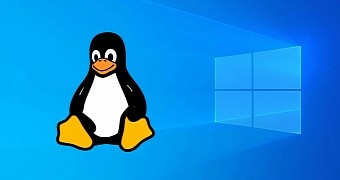As everybody knows already, Linux has recently recorded massive growth, with its market share increasing pretty much every single month as more users decided to give the platform a shot.
This data pretty much speaks for itself. While Windows is more or less losing ground, Linux keeps growing, so at first glance, there’s a very obvious transition that’s happening from Microsoft’s operating system to the world of Linux.
The en-masse switch to Linux isn’t necessarily surprising when we look at the recent changes that happened for Windows users.
Microsoft ended support for Windows 7 in January this year, asking users still running the 2009 operating system to upgrade to Windows 10.
For many, however, Windows 7 was the only way to go as far as Microsoft’s operating system was concerned. And this happened for two reasons.
First, it’s because Windows 7 was just running smoothly on their devices, and these users don’t want to spend extra on new hardware to enjoy the full Windows 10 feature package. While Windows 10 can run on Windows 7 systems just fine, Microsoft recommends users to purchase new computers, as new-generation hardware is required for some features, such as Windows Hello biometric authentication.
And second of all, it’s the different approach that Microsoft is using for Windows 10. Windows 7 is considered by many the last Windows version with a traditional desktop approach, while Windows 10 uses a modern concept that includes an app store, a digital assistant, an Action Center, and so much more.
Considering these two reasons, the switch to Windows 10 is something that many users just don’t agree with. But at the end of the day, what’s pushing them to Linux?
Judging from the feedback that everybody can read online, and which Microsoft itself should check out if it wants to slow down this migration to Linux, one of the reasons is related to Microsoft as a whole.
Some of those who switched to Linux say they’ve had enough in the Windows world and switching to an open-source platform guarantees more transparency, improved security, and so much more.
Microsoft itself has tried to improve in these exact same areas, with major investments made in terms of the transparency and security offered to Windows 10 users. If the company managed to improve here is something that’s still debatable, but for now, it looks like Microsoft’s efforts aren’t enough to stop the growing appetite for Linux.
The modern approach that Microsoft turned to with Windows 10 certainly didn’t help, especially with all the controversy around things like telemetry and data collection. And features that have been forced on users, including Cortana and more recently the Chromium-based Microsoft Edge browser, have convinced some that it’s time to explore the non-Windows world too, and in their case, Linux is very often the first stop.
While I don’t have any data in this regard, I think that an important part of those making the transition to Linux are power users, as beginners would rather stick with Windows for the familiar experience. But with all the improvements that Linux distros have received in terms of user-friendliness, there’s a good chance that others might want to get a taste of the likes of Ubuntu, Linux Mint, and others too at some point in the near future.
At the end of the day, I don’t think that the migration from Windows to Linux comes down to just a single thing, but rather to a handful of struggles in the Microsoft world that can be so much easier resolved on an open-source platform.
What made you switch from Windows to Linux? Let us know in the box after the jump.

 14 DAY TRIAL //
14 DAY TRIAL //